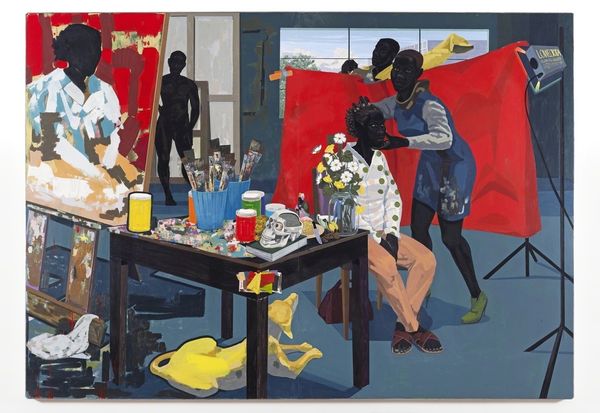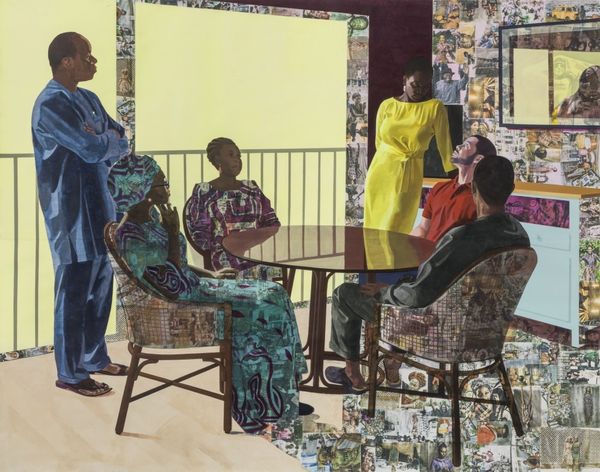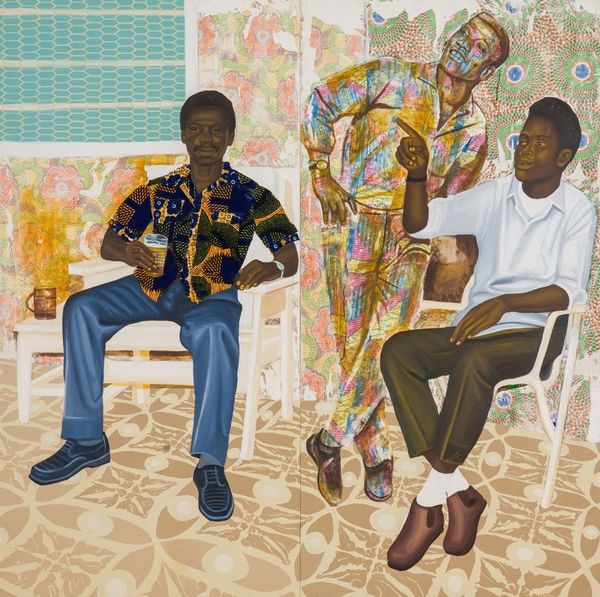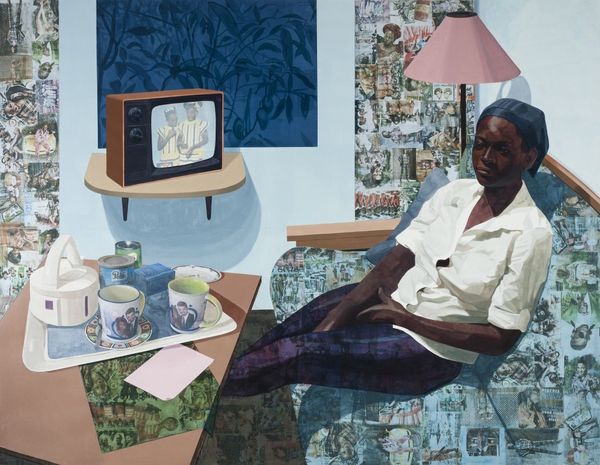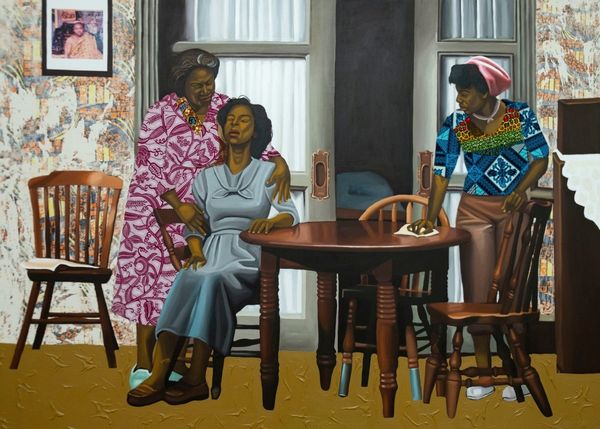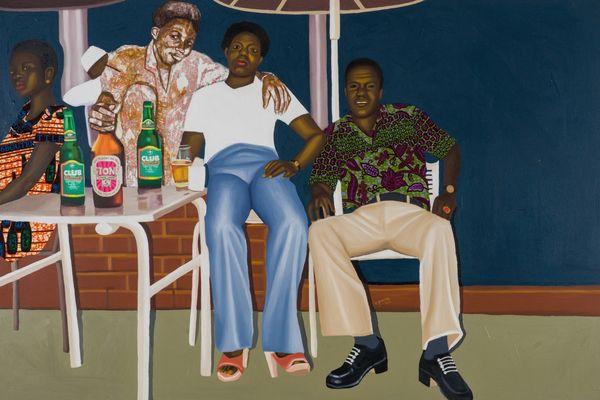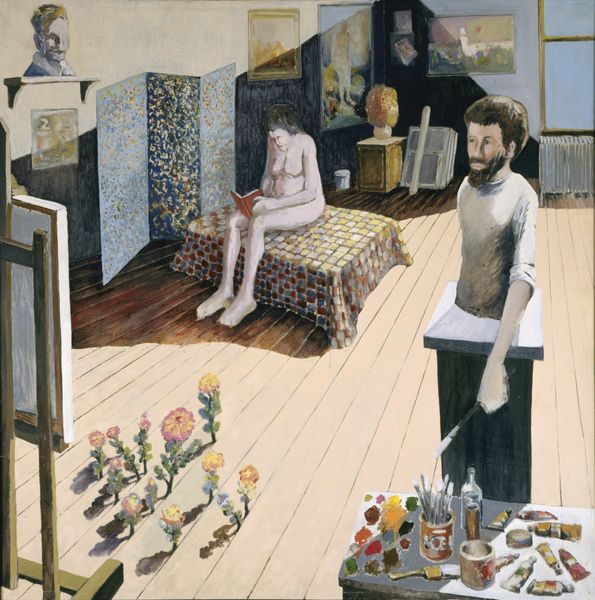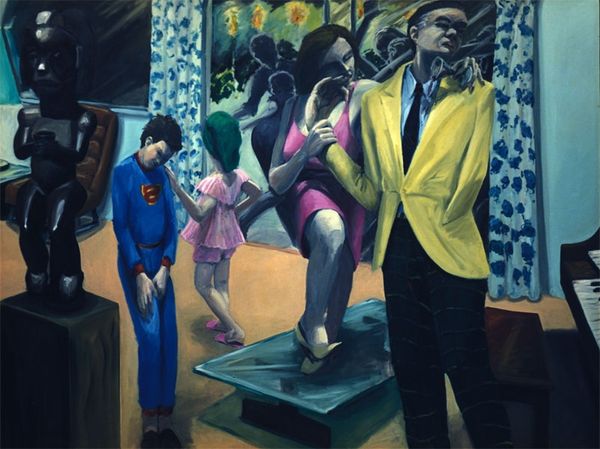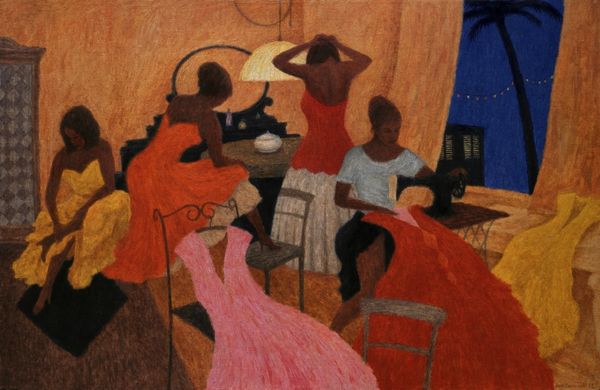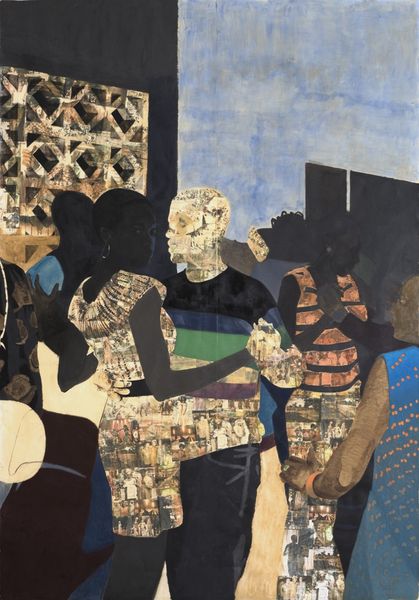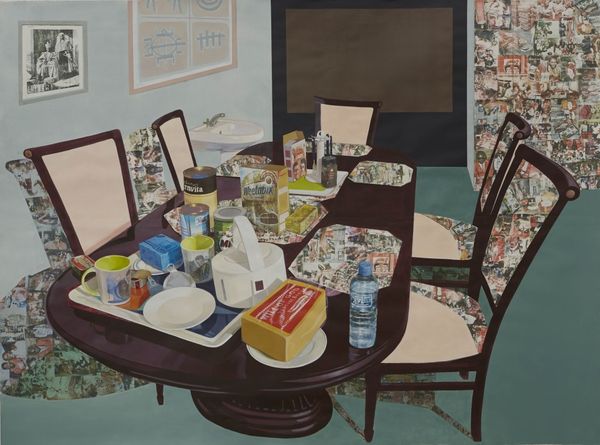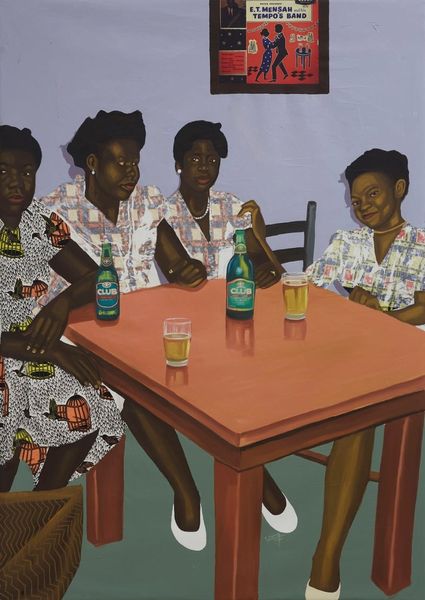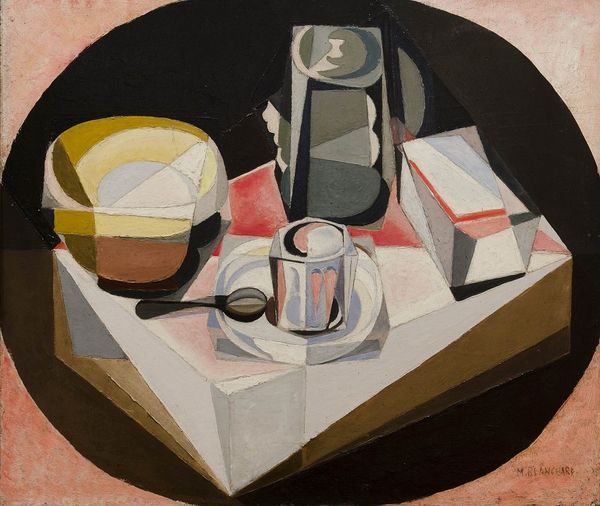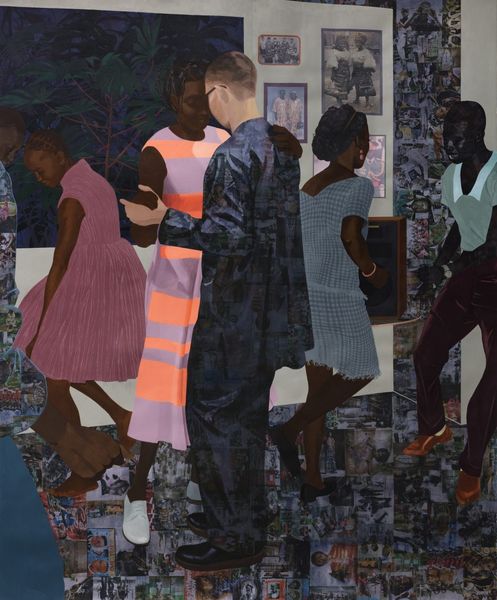
mixed-media, painting, acrylic-paint
#
portrait
#
mixed-media
#
painting
#
mixed mediaart
#
acrylic-paint
#
figuration
#
genre-painting
#
realism
Dimensions: 39.5 x 51 cm
Copyright: Benny Andrews,Fair Use
Curator: Here we have Benny Andrews' 1965 mixed-media painting, "Dinner Time." What strikes you first? Editor: It's undeniably poignant. A scene of communal eating under what seems like difficult circumstances. There’s a powerful simplicity in the composition that tugs at something primal. The flattened perspective almost pushes the figures toward us, demanding we bear witness. Curator: Andrews, who was deeply engaged with the Civil Rights Movement, often used art as a form of social commentary. He frequently depicted scenes from everyday African American life, challenging the stereotypical portrayals prevalent in mainstream culture at that time. His focus wasn't necessarily about illustrating joy, but authenticity. Editor: Absolutely. Look at the figure tending the stove – there's a weariness, yet a quiet strength. It reads to me like labor inequity right away. While three men dine, she is standing tall doing labor and overseeing all aspects of care. This woman could also very easily symbolize all black women forced to work while men in her family do not help with household labor. Curator: Consider also the materials. The roughness of the mixed media—perhaps scraps of fabric incorporated—echoes the resourcefulness required to sustain life amidst socio-economic hardship. In the art world then, many would rather look at expensive, representational oil paintings. To include these kinds of found elements subverts expectation, forcing us to value something new. Editor: I agree, and that material element connects so beautifully with the social commentary. What is this painting teaching the white, bourgeois art critic? It refutes that "fine" art can only come from pristine materials and traditional forms, just as Andrews' narrative challenges ingrained biases about Black lives. Curator: Andrews was acutely aware of the art world's biases, his aesthetic decisions actively questioned institutional norms and whose stories mattered. And still matters today, right? Editor: Certainly, "Dinner Time" is an example of work that insists on visibility, disrupting established narratives. It demands acknowledgement, not just of the figures depicted, but the countless untold stories that they represent. It is in conversation with systemic barriers and demands equality today, still. Curator: Precisely. Viewing it through this lens deepens our appreciation. We realize "Dinner Time" is much more than a simple domestic scene, isn’t it? Editor: I’ll never think of a simple dinner the same way. It really pushes us to interrogate power, labor, and the untold narratives shaping marginalized people's lives.
Comments
No comments
Be the first to comment and join the conversation on the ultimate creative platform.
